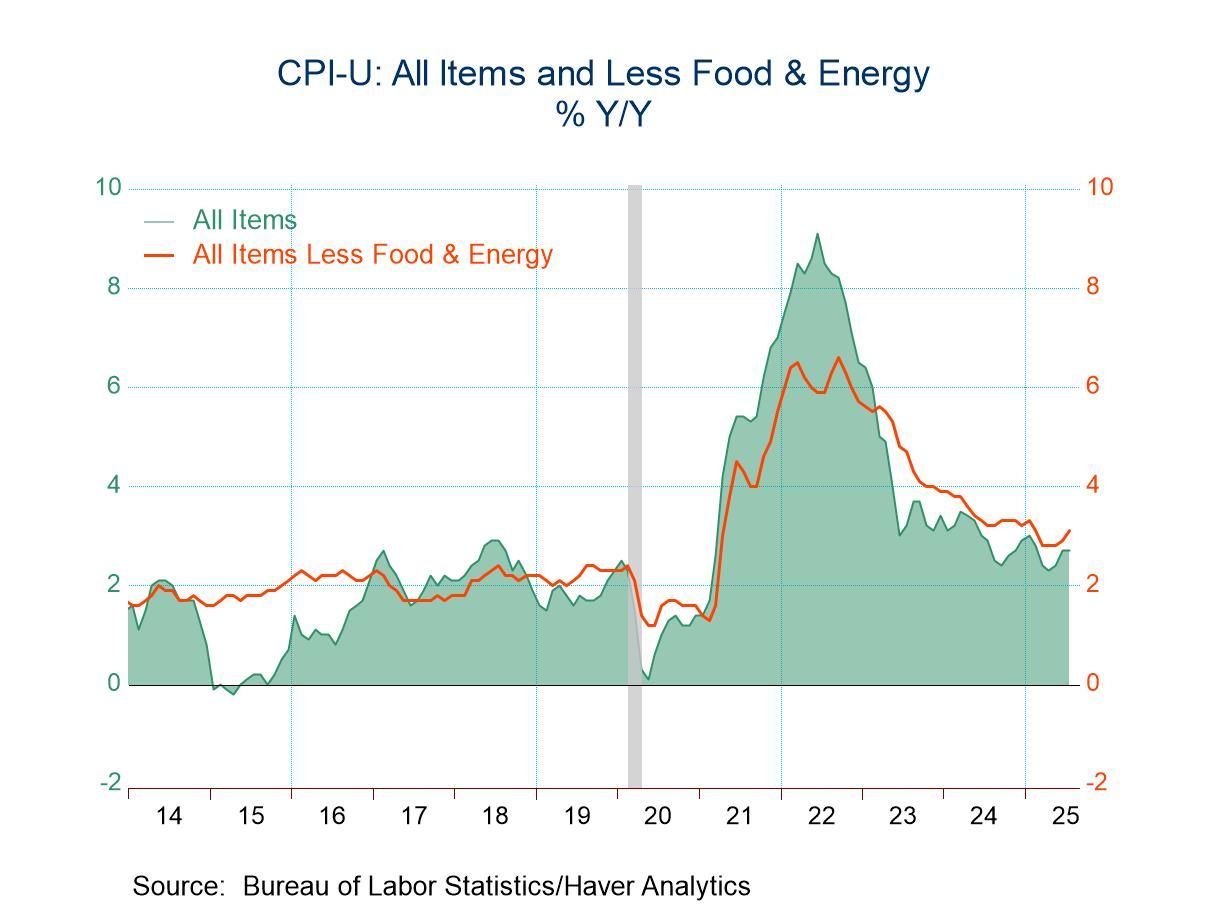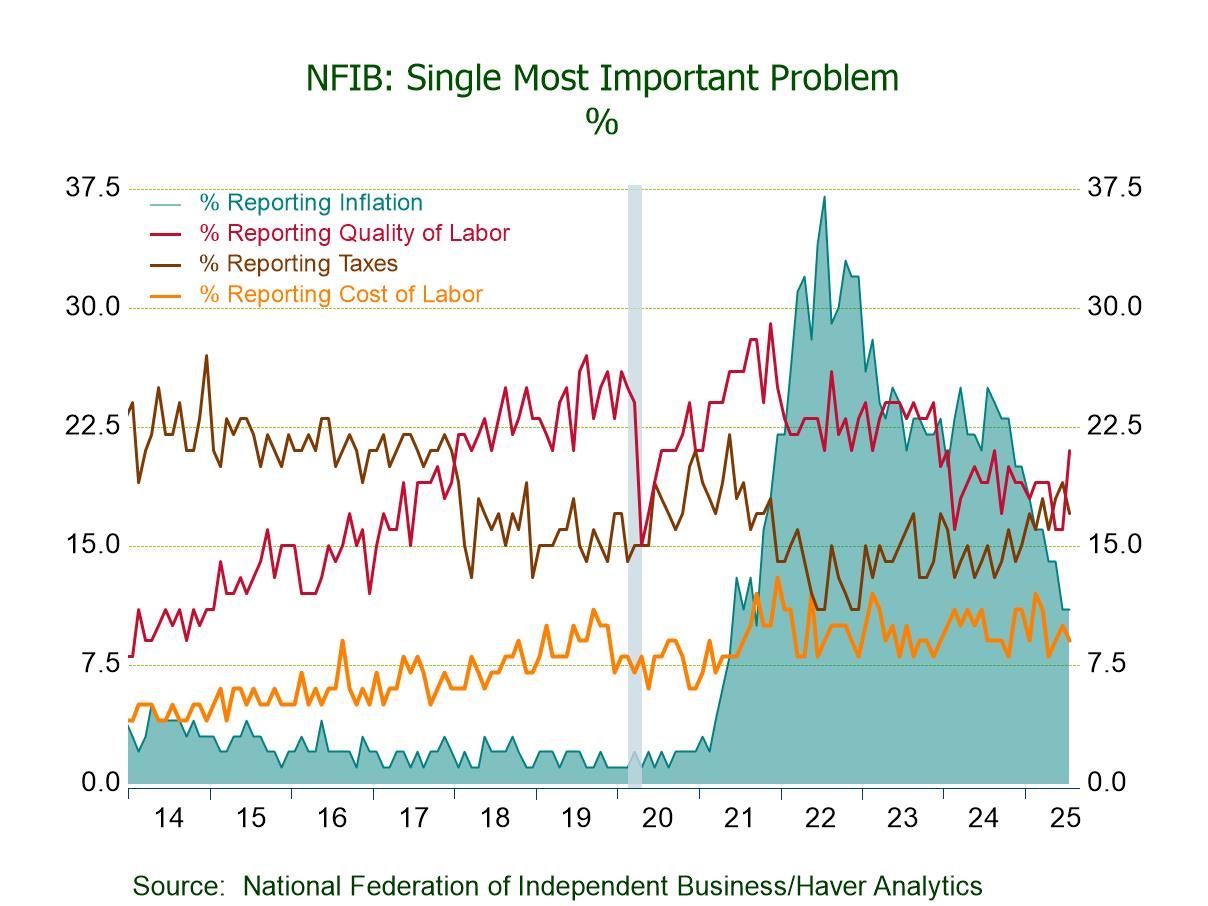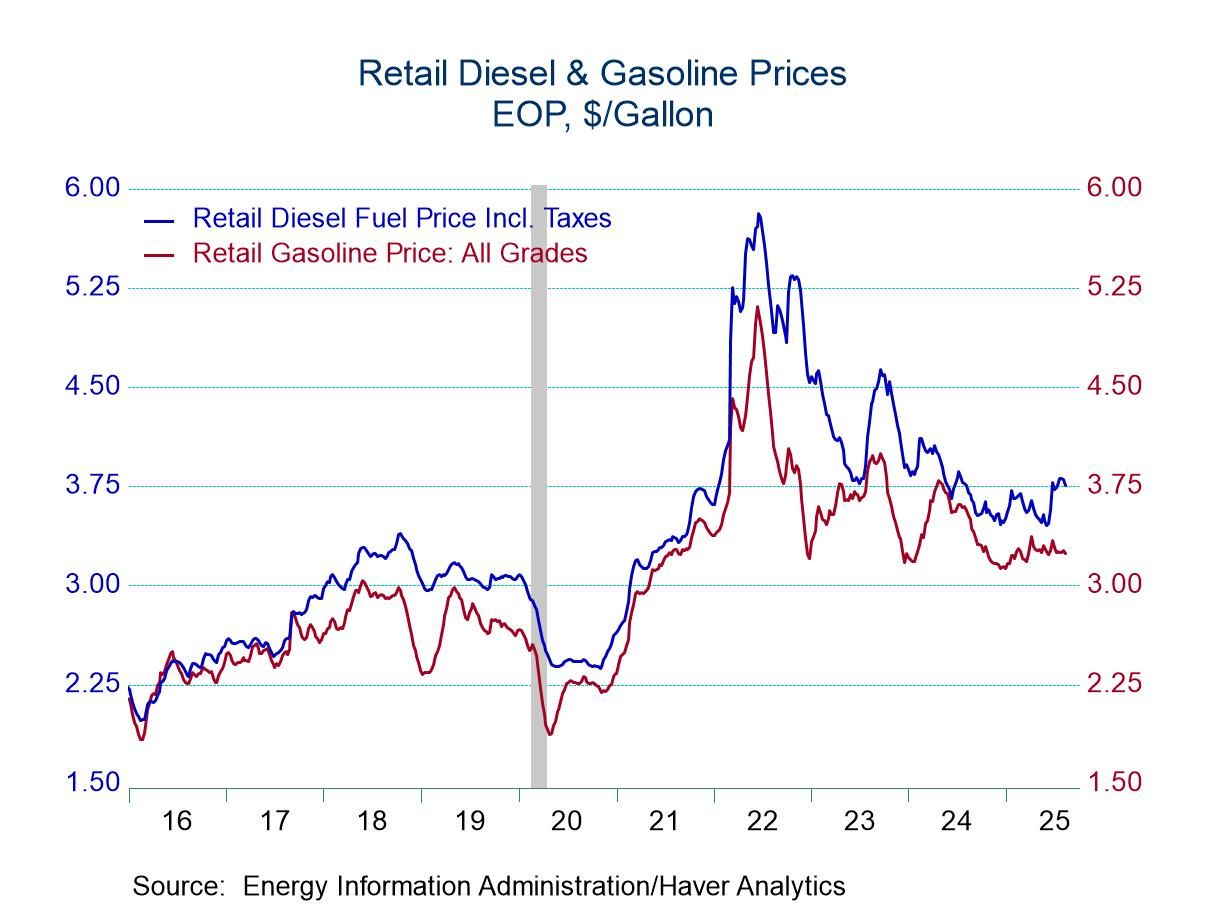 Global| Aug 03 2009
Global| Aug 03 2009U.S. Light Vehicle Sales Benefit From "Cash For Clunkers" Program
by:Tom Moeller
|in:Economy in Brief
Summary
The U.S. government's "Cash for Clunkers" program was given credit for supporting sales of light vehicles last month. The program gives car buyers up to $4,500 for trading in older, gas-guzzling vehicles if they're buying more fuel [...]
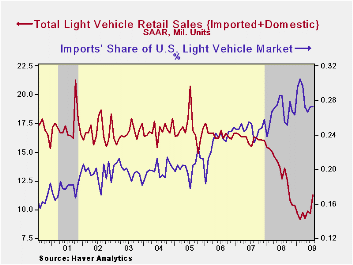 The U.S. government's "Cash for Clunkers" program was given
credit for supporting sales of light vehicles last month. The program
gives car buyers up to $4,500 for trading in older, gas-guzzling
vehicles if they're buying more fuel efficient cars. The Treasury Dept.
was authorized to spend $1 billion and an additional $2 billion
currently is under consideration by the Senate. The House passed its
approval of the plan on Friday. One estimate is that, just last week,
the program helped spike vehicle sales to a 15-to-16 million annual
rate. Regardless of the program's impact, U.S. light vehicle
sales last month jumped 15.8%
The U.S. government's "Cash for Clunkers" program was given
credit for supporting sales of light vehicles last month. The program
gives car buyers up to $4,500 for trading in older, gas-guzzling
vehicles if they're buying more fuel efficient cars. The Treasury Dept.
was authorized to spend $1 billion and an additional $2 billion
currently is under consideration by the Senate. The House passed its
approval of the plan on Friday. One estimate is that, just last week,
the program helped spike vehicle sales to a 15-to-16 million annual
rate. Regardless of the program's impact, U.S. light vehicle
sales last month jumped 15.8% 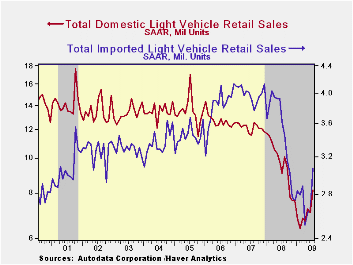 from June to 11.24 million
units (AR) which was the highest sales rate since last September. It
followed a 1.6% decline during June. While sales were firm last month,
they remained down by nearly one-third, year-to-date, from the first
seven months of 2008. (Benchmark revisions altered sales levels
slightly back to 2002.)
from June to 11.24 million
units (AR) which was the highest sales rate since last September. It
followed a 1.6% decline during June. While sales were firm last month,
they remained down by nearly one-third, year-to-date, from the first
seven months of 2008. (Benchmark revisions altered sales levels
slightly back to 2002.)
Unit sales of U.S. made light vehicles jumped 15.8% m/m to 8.17M units during July which was their highest since last September, according to the Autodata Corporation. (Seasonal adjustment of the figures is provided by the U.S. Bureau of Economic Analysis). Sales of domestically made cars jumped 25.4% m/m to 4.11M units while light truck sales rose 7.4% m/m to 4.06M units. YTD, sales of domestic vehicles overall are down 33.6% following last year's 35.8% drop from December-to-December.
In similar fashion, sales of imported light vehicles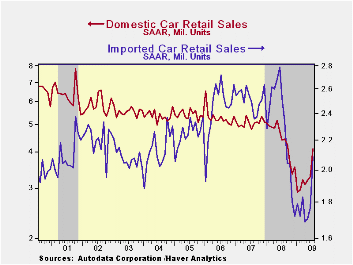 were strong and rose 16.0% m/m during July from June. Sales of imported
autos rose 18.3% from June and were at their highest level since last
August. Sales of imported light trucks were nearly as strong m/m, up
11.3% from June, but they've really been strong all year rising to
their highest just since March. Sales of imported vehicles YTD have
increased 12.5%.
were strong and rose 16.0% m/m during July from June. Sales of imported
autos rose 18.3% from June and were at their highest level since last
August. Sales of imported light trucks were nearly as strong m/m, up
11.3% from June, but they've really been strong all year rising to
their highest just since March. Sales of imported vehicles YTD have
increased 12.5%.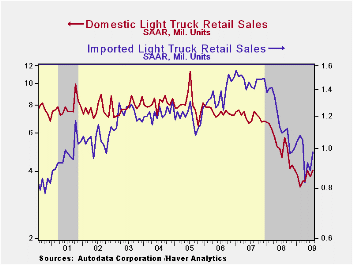
Overall, import's share of the U.S. light vehicle market held steady at 27.3% last month after reaching 26.5% during all of last year. (Imported vehicles are those produced outside the United States.) Imports' share of the U.S. car market totaled 33.7% while the share of the light truck market was 19.5%, up slightly from last year.
The U.S. vehicle sales figures can be found in Haver's USECON database.
| Light Vehicle Sales (SAAR, Mil. Units) | July | June | May | July Y/Y | 2008 | 2007 | 2006 |
|---|---|---|---|---|---|---|---|
| Total | 11.24 | 9.70 | 9.86 | -11.4% | 13.17 | 16.16 | 16.54 |
| Autos | 6.20 | 5.04 | 4.89 | -10.7 | 6.71 | 7.58 | 7.77 |
| Domestic | 4.11 | 3.28 | 3.19 | -7.0 | 4.42 | 5.07 | 5.31 |
| Imported | 2.09 | 1.76 | 1.71 | -17.3 | 2.29 | 2.52 | 2.45 |
| Light Trucks | 5.04 | 4.66 | 4.37 | -12.2 | 6.47 | 8.60 | 8.78 |
| Domestic | 4.06 | 3.78 | 4.05 | -12.6 | 5.29 | 7.10 | 7.42 |
| Imported | 0.98 | 0.88 | 0.92 | -10.4 | 1.18 | 1.47 | 1.37 |
Tom Moeller
AuthorMore in Author Profile »Prior to joining Haver Analytics in 2000, Mr. Moeller worked as the Economist at Chancellor Capital Management from 1985 to 1999. There, he developed comprehensive economic forecasts and interpreted economic data for equity and fixed income portfolio managers. Also at Chancellor, Mr. Moeller worked as an equity analyst and was responsible for researching and rating companies in the economically sensitive automobile and housing industries for investment in Chancellor’s equity portfolio. Prior to joining Chancellor, Mr. Moeller was an Economist at Citibank from 1979 to 1984. He also analyzed pricing behavior in the metals industry for the Council on Wage and Price Stability in Washington, D.C. In 1999, Mr. Moeller received the award for most accurate forecast from the Forecasters' Club of New York. From 1990 to 1992 he was President of the New York Association for Business Economists. Mr. Moeller earned an M.B.A. in Finance from Fordham University, where he graduated in 1987. He holds a Bachelor of Arts in Economics from George Washington University.



